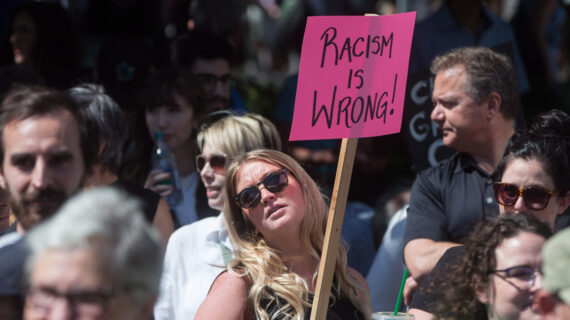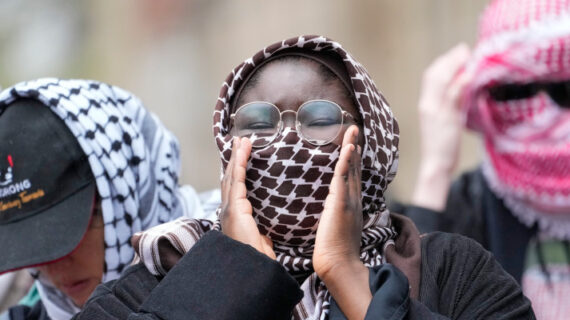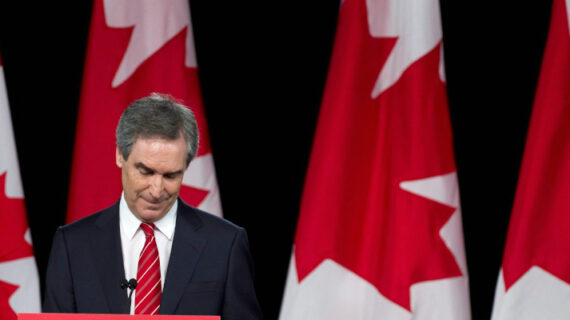- In 2015, there were provincial Liberal governments in B.C., Ontario, Quebec, Nova Scotia, New Brunswick, Prince Edward Island, and Newfoundland and Labrador. In 2023, there remains just one in Newfoundland and Labrador.
- While some commentators are convinced it is difficult to elect premiers of the same political persuasion as the current federal governing party because of a voting philosophy amongst Canadians, others believe it is simply an issue of manpower. It takes more than a thousand people to staff all the ministries in Ottawa, and hundreds, at least, to run Queen’s Park. As a result, it is difficult for any ideologically persuaded group to govern Ontario and run the federal government at the same time with the troops stretched so thin.
- Analysts say that while the Liberal success in the provinces has been hard to come by lately, it would be a mistake to write off the Ontario Liberal Party, especially, and that the Liberal brand across Canada remains strong.
- The Ontario Liberal Party leadership election will officially begin sometime this spring.
Few federal governments have ever won a fourth-consecutive term in office.
It is the pattern that Justin Trudeau’s Liberal Party of Canada must break to remain in government when the next election happens. The party has lost the popular vote twice in a row. Both times, his government was by the first-past-the-post system Trudeau once promised to abolish and now probably cherishes.
The Tories are just a few hundred thousand votes shy in southern Ontario from ejecting the Liberals. Still, it is a far better situation to be in than the federal Liberals’ provincial cousins, both the officially affiliated and nominally unaffiliated.
In 2015, the year Trudeau became prime minister, there were provincial Liberal governments in B.C., Ontario, Quebec, Nova Scotia, New Brunswick, Prince Edward Island, and Newfoundland and Labrador
Of those provinces in 2023, there is now just one Liberal premier in Newfoundland and Labrador, and Andrew Furey is not a household name outside the province. In the other nine provinces where Liberal parties are out of government, they only form a credible official Opposition in BC, New Brunswick, and Nova Scotia.
Some pundits have warned that the decline of provincial Liberal parties is a sign that the whole Liberal brand is declining across Canada, perhaps permanently.
Humbled in Ontario
“I think that will impact the federal party negatively from a fundraising point of view, and from a local ground organization point of view,” says Andrew Perez. “Oftentimes, those riding associations are composed of the same individuals or the same volunteers. And so with the provincial party, not having active riding associations in much of the province, I think that does impact the feds.”
Perez is a senior consultant with Hill+Knowlton Strategies in Toronto and has worked for a lot of Liberals of all stripes in his career. Most notably, Perez was engaged by former Finance Minister Bill Morneau in 2015 and worked on the Ontario Liberal Party’s central party campaign in the 2022 provincial election.
The tenure of the last OLP government, which started with 72 out of 103 ridings in 2003, ended in 2018 with the party winning just 7 out of 124.
Recently-elected OLP MPP Ted Hsu suggests that the memory of the unpopular OLP government that was blown up in 2018 hasn’t yet fully faded.
“I think in both situations, there just hasn’t been enough time since the last Liberal government,” says Hsu of the OLP and the federal Liberals, who were five years removed from power in 2011 after governing Canada from 1993 to 2006. “The brand is still…I won’t say healthy, but I don’t think it’s in decline, at least in Ontario.”
Hsu was part of 2011’s historically humble federal Liberal freshman class, when voters across Canada mostly ignored the party under Michael Ignatieff’s leadership, leaving them with 34 seats in the 305-seat House of Commons.
In 2015, after four years in the House as part of a nearly powerless third-place caucus, Hsu first left politics. His departure was perfectly timed with Justin Trudeau’s Liberals pulling off the biggest Canadian electoral comeback of the 21st century, winning a majority government.
After seven years officially out of the game, Hsu ran again under the OLP banner in Ontario’s 2022 provincial election. The OLP won 8 out of 124 seats, Hsu among them, a one-riding improvement over the party’s 2018 performance.
As either the luckiest or unluckiest politician in Canada, Hsu is getting déjà vu in the Legislative Assembly of Ontario at Queen’s Park.
“Let me just say the seat that I currently have in the Ontario legislature resembles the seat that I had in the House of Commons,” says Hsu, who now sits on the rarely-important left corner in the back of the legislature, far away from the Speaker.
If Hsu sticks around for at least a second term in his new role, the next time he leaves politics may leave behind a far more significant legacy.
Perez points out that when the federal Liberal government has been in power historically, right-wing governments have governed Ontario, which is currently the case with Doug Ford’s Ontario Progressive Conservatives and his massive majority.
Stretched too thin
Several commentators, including Perez, have written about Ontario’s tendency to vote for premiers who are the ideological opposite of whoever holds power federally.
However, Mitch Heimpel, a former chief-of-staff in Ford’s PC government, says it may be more of a manpower issue rather than a contrarian voting philosophy among Ontarians.
Heimpel says it takes more than a thousand people to staff all the ministries in Ottawa, and hundreds, at least, to run Queen’s Park. As a result, it is difficult for any one ideologically persuaded group to govern Ontario and run the federal government at the same time with the troops stretched so thin.
“We don’t have a lot of examples…of both the party brands surviving both Queen’s Park and federally,” says Heimpel. “That is in large part due to the size and complexity of some of the ministries you’re dealing with and the sheer amount of human capital it takes to run both programs.”
All Canadian parties with a capital-L “Liberal” in their name share staffers, strategists, and elected politicians who often bounce between provincial and federal politics when they don’t make it in the private sector—or because they just have a special addiction to politics.
Even the BC Liberals, often labelled, in criticism or praise, as the furthest to the Right of all provincial Liberal parties, were led by politicians connected with the federal party at the height of their success.
The BC Liberals are the only provincial Liberal party west of Ontario to govern a province in near living memory.
Nonetheless, the OLP is especially important when it comes to relations with the federal party.
“Ontario probably has the greatest degree of transferability between the federal parties and the provincial parties in terms of just brand transfer,” says Heimpel. “That has a lot to do with there not really being much of a Liberal presence west of the Ontario-Manitoba border…there’s a well-trodden path between Queen’s Park and Parliament Hill for a lot of people.”
Ted Hsu remembers hearing of many OLP staffers in Premier Kathleen Wynne’s government, which crashed in 2018, who moved on to Trudeau’s government. He says there are also many strategists and consultants who more easily jump back and forth between the OLP and the federal party.
Perez says that while in government, the OLP became increasingly reliant on a corps of paid staff, rather than maintaining a larger grassroots network.
“If you take premier’s office staff, and then all the staff that work in ministers’ offices, you easily have 250 individuals who come election time are deployed either to campaign headquarters or to the ridings,” says Perez. “The party over a 15-year period had become increasingly reliant on paid staff. It was in their interest. They had an incentive to work on campaigns so that the party could form government again.”
Reduced to third place in the Ontario legislature and thereby lacking official party status, Perez says there were just a few select die-hard volunteers and partisans left after 2018.
Perez says it would be oversimplifying it to blame the OLP’s downfall solely on reduced staffing, pointing out that when the party’s support collapsed in 2018, it had been in power for 15 years.
“The party has accumulated a number of barnacles over the years. Kathleen Wynne, her personal brand, not so much the Liberal brand, by about 2017 had become extremely unpopular,” says Perez.
Nonetheless, Perez acknowledges many staff had left Queen’s Park before the 2018 election, in which voters rejected Wynne’s high-spending policies in favour of Ford’s promises of cheaper beer, fiscal conservatism, and not being Wynne, two of which he achieved.
“They may have seen the writing on the wall, they may have been burnt out, moving onto greener pastures,” says Perez. “But at the end of the day, I don’t think the party as an institution was in a position to win.”
Perez says the relationship between the federal Liberals and the OLP became much closer under Wynne’s leadership from 2013 to 2018. Both fiscally-loose progressive hardliners, Wynne and Justin Trudeau openly campaigned with each other. Perez says Wynne’s predecessor Dalton McGuinty mostly kept the federal party visibly at arm’s length.

Building the farm team
Many notable federal Liberal advisors, like Gerald Butts, and many MPs, like Michael Coteau and Peter Fonseca, learned the ropes with the OLP under McGuinty.
Heimpel says that while working at Queen’s Park after Trudeau won the 2015 federal election, many OLP staffers he knew tweaked their resumes and gossiped about who they knew in Ottawa and what ministries they wanted to work for. He compares it to junior hockey.
“It’s like a CHL hockey team…you’re not losing fourth-line players when staffers make those moves, you’re losing your over-agers and your NHL prospects,” says Heimpel. “As anybody who watches the OHL, WHL, (and) QMJHL hockey knows, if you lose your NHL prospects and your over-agers in the same offseason, you suck for a couple years after that.”
Prior to the 2007 election, when McGuinty’s OLP won their second majority, several of the Ontario PC’s most high-profile figures and former cabinet ministers like John Baird and Jim Flaherty left to join Stephen Harper’s federal Conservatives.
Another pattern of Canadian politics is to have long spells of federal Liberal governments followed by spectacular falls from grace and then miraculous recoveries by the party after two or three election cycles.
Perez says it would be a mistake to write off the OLP and that the Liberal brand across Canada remains strong.
Hsu says the quality of the candidates who represented the OLP in the 2022 provincial election, which had only enough money for a campaign van instead of a bus, speaks volumes about the people still attracted to the party.
Regarding the leadership race, due to officially begin this spring, Perez hopes to see as many candidates as possible, and for the $100,000 entrance fee to be lowered to level the playing field.
“Our party needs a robust contest over what is the future of liberalism,” says Perez, who believes a plurality of Canadians identifies as liberals in some form. “I would not be pleased to see only a couple of candidates.”
What kind of leader do Liberals want?
Hsu says the OLP needs a leader willing to commit time and energy to reorganizing the party, replenishing its riding associations, and listening to voters. In his opinion, a quarter of all people in Ontario would consider themselves committed liberals who care about individual rights and freedoms, balanced by a need for investing to build strong communities.
“Another small-l liberal value is this desire for reform, we can always make things better, what’s the next thing we can make better?” says Hsu. “That’s a classical liberal thing to do, but balance that against thoughtfulness and humility”.
If the Liberal Party of Canada has proven anything over the last 40 years, it is that any party can form a government if they win in urban and suburban Ontario. Furthermore, a successful OLP has shown itself to be the federal Liberals’ biggest well of staffers, strategists, and veteran political candidates.
“Maybe I’m being too Ontario-centric here, but many things that Canada wants to do are anchored in Ontario, and evolve in Ontario,” says Hsu, who has not announced if he will run to be OLP leader, but is rumoured to be considering it.
Many Canadians outside Ontario don’t like to be told that what happens in the most wealthy, most politically consequential, and most populated province in the country can affect them, even when it’s absolutely true.




